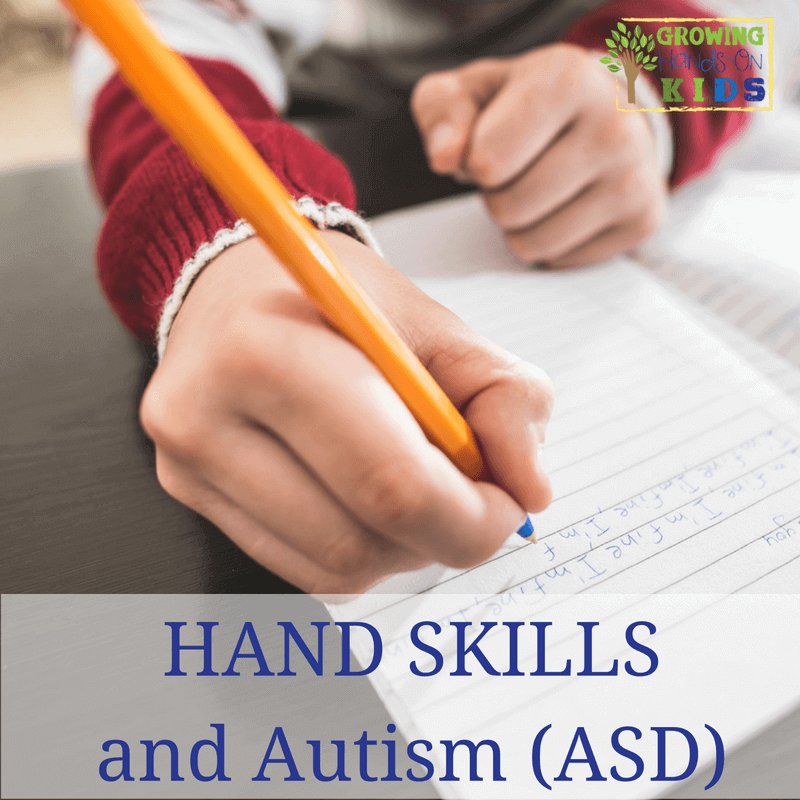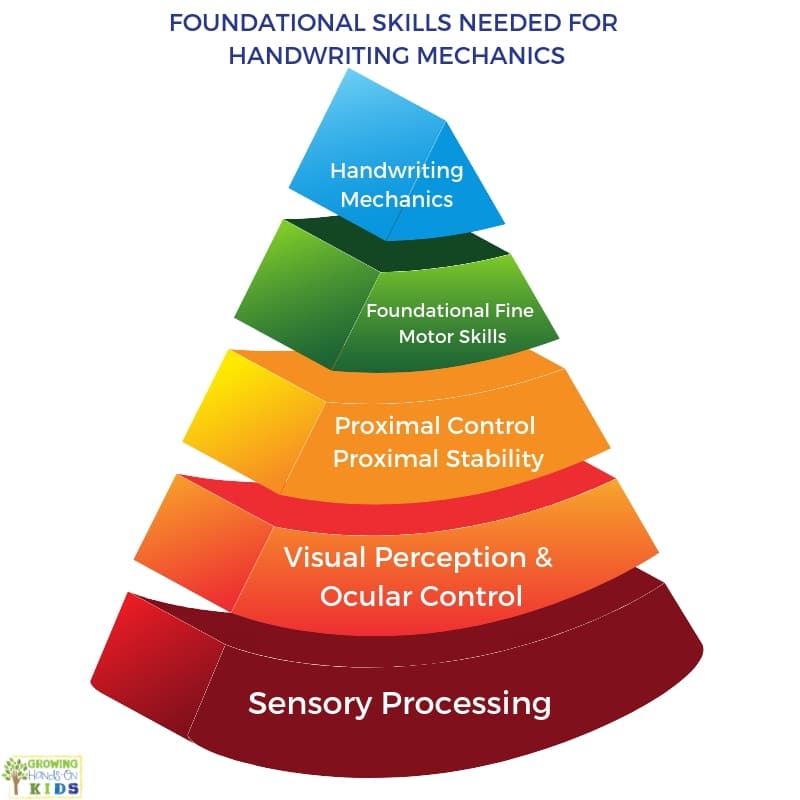Hand Skills and Autism Spectrum Disorder – A Book Review
Affiliate and Referral links are used below to promote products I love and recommend. I receive a commission on any purchases made through these links. Please see my disclosure policy for more details. As an Amazon Associate, I earn from qualifying purchases.
People with an Autism Spectrum Disorder diagnosis face many challenges in their life. These challenges can include social skills, communication skills, cognitive abilities, and also motor movements. Hand skills (also known as fine motor skills) can be greatly affected in a person with Autism Spectrum Disorder (ASD). In the book From Flapping to Function: A Parent's Guide to Autism and Hand Skills, Barbara Smith, M.S., OTR/L shares important information on how these skills are affected, as well as intervention ideas and strategies to help facilitate the best outcomes in fine motor and hand skills.
I received a free copy of From Flapping to Function: A Parent's Guide to Autism and Hand Skills in order to complete this review. All thoughts are 100% honest and my own.
While the book From Flapping to Function is written with parents in mind, I feel it would be a great resource for anyone who works with a child on the Autism Spectrum.
Reasons Why Hand Skills are Difficult for those with Autism
Children with Autism can struggle with hand skills for a variety of reasons. Some of those include:
- poor posture
- visual skills
- sensory processing problems
- low muscle tone
- gross motor skills
All of these contribute to poor fine motor skills, which are extremely important when mastering handwriting.
Autism is also on a spectrum and may include any other types of disorders or disabilities which can factor into the person's ability to grasp new skills or master age-appropriate ones. Some of these include:
- Sensory Processing Disorder (which includes Sensory Modulation Disorders, Sensory-Based Motor Disorders), Sensory Discrimination Disorder)
- ADD/ADHD
- Learning Disabilities
- Hypotonia (low tone)
- OCD (Obsessive-compulsive disorder)
- Depression
- PPD (Pervasive-development disorder)
From Flapping to Function goes into more detail of each of these and how they can affect a person with Autism and their hand skills or fine motor skills.
What Children Need In Order to Be Successful in Fine Motor Skills
In order to be successful in hand skills, a child needs to be able to master the following skills:
- Sensory processing – tolerating touch, textures, and able to adapt to different environments
- Vision – being able to focus on people or tasks
- Executive function skills – attending, organizing, and planning
For many children on the Autism Spectrum, all 3 of these skills are impacted which is why hand skills can be so difficult.
In From Flapping to Function, Barbara Smith, M.S., OTR/L, explains each of the ways hand skills can be affected in a child with Autism and gives easy to use activities and strategies to encourage those skills.
One thing I was especially happy to see as a fellow clinician, was the way this book looked at the entire picture of hand skills, including improving position and gross motor skills. Even starting with tummy time as an infant, and then explaining how crossing midline and bilateral coordination are all so important for successful hand skills. All of these skills can be difficult for a child with Autism, so at the end of each section, there are practical ways you can work with your child to improve these skills.
One area that I had not really thought about with fine motor skills was how important executive function skills are. Executive functioning is higher level brain functions such as avoiding distractions, problem-solving, making choices, focus, managing time, and impulse control.
Some other things included in this book are:
- Teaching Strategies
- How movement is a powerful reinforcer
- Apps to use as teaching tools
- Adaptation ideas
- Adults on the Autism spectrum
- Do-it-yourself options and tips
- Resources for other sites, programs, and equipment
If you are a parent, teacher, or therapist looking to help improve your child or student's hand skills and they are on the Autism Spectrum, I highly suggest you pick up a copy of From Flapping to Function. You can get a paperback or Kindle version over on Amazon.
You May Also Like:

Heather Greutman, COTA
Heather Greutman is a Certified Occupational Therapy Assistant with experience in school-based OT services for preschool through high school. She uses her background to share child development tips, tools, and strategies for parents, educators, and therapists. She is the author of many ebooks including The Basics of Fine Motor Skills, and Basics of Pre-Writing Skills, and co-author of Sensory Processing Explained: A Handbook for Parents and Educators.



Thanks for the article. Understanding the context in which language is used is crucial, as autistic individuals may have difficulty interpreting language in social situations.